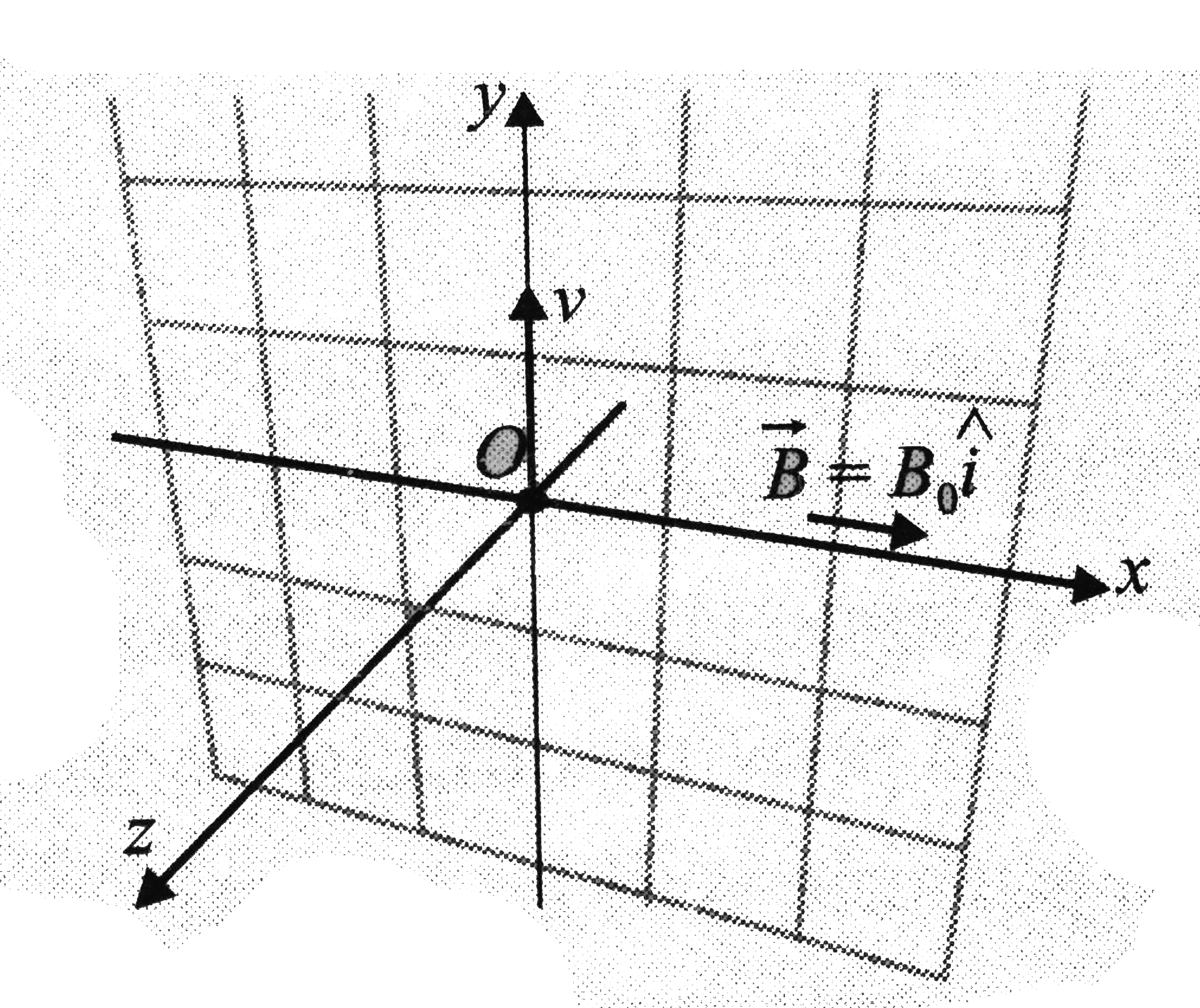A particle with charge Q coulomb, tied at the end of an inextensible string of length R metre, revolves in a vertical plane. At the centre of the circular trajectory, there is a fixed charge of magnitude Q coulomb . The mass of the moving charge M is such that Mg=Q24πɛ0R2. If at the highest position of the particle, the tension of the string just vanishes, the horizontal velocity at the lowest point has to be
0
2√gR
√2gR
√5gR
The correct Answer is:B
Step by step video, text & image solution for A particle with charge Q coulomb, tied at the end of an inextensible string of length R metre, revolves in a vertical plane. At the centre of the circular trajectory, there is a fixed charge of magnitude Q coulomb . The mass of the moving charge M is such that Mg=Q^2/(4pivarepsilon_0R^2). If at the highest position of the particle, the tension of the string just vanishes, the horizontal velocity at the lowest point has to be by Physics experts to help you in doubts & scoring excellent marks in Class 12 exams.
Updated on:21/07/2023Topper's Solved these Questions
- CIRCULAR MOTIONBook:TARGET PUBLICATIONChapter:CIRCULAR MOTIONExercise:EVALUATION TEST
Explore 11 Videos
- CIRCULAR MOTIONBook:TARGET PUBLICATIONChapter:CIRCULAR MOTIONExercise:CRITICAL THINKING
Explore 93 Videos
- ATOMS, MOLECULES AND NUCLEI Book:TARGET PUBLICATIONChapter:ATOMS, MOLECULES AND NUCLEI Exercise:Evaluation test
Explore 19 Videos
- CURRENT ELECTRICITY Book:TARGET PUBLICATIONChapter:CURRENT ELECTRICITY Exercise:Evaluation Test
Explore 6 Videos
Similar Questions
A charge particle of mass m and charge q is projected with velocity v along y-axis at t=0.

Find the velocity vector and position vector of the particle →v(t)and→r(t) in relation with time.
View SolutionTwo points charges are placed on x-axis as shown, a = 1 cm, q=1μC , mass of each particle m=6g. The charges are tied at the end of an inextensible string of length 2a. The whole system is free to move on a horizontal frictionless surface.

Now suppose a third charge of equal value +q is fixed at the point (a/2,0) and the system of charges A and B is released. There is no friction between third charge and string. Find the maximum velocity of the system of charges A and B.
View Solution
Knowledge Check
A charge q coulomb moves in a circle at n revolution per second and the radius of the circle is r metre. Then magnetic feild at the centre of the circle is
A2πqnr×10−7NA−1m−1B2πqr×10−7NA−1m−1C2πnqr×10−7NA−1m−1D2πqr×10−7NA−1m−1A body is moving in a vertical circle of raius 2r such that, the string is just taut at its highest point. The speed of the particle when the string is horizontal, is
A√grB√grC√6grD√5grA particle of mass m is tied to a string of length L and whirled into a horizontal plan. If tension in the string is T then the speed of the particle will be :
A√TlmB√2TlmC√3TlmD√Tml
A particle of mass m attached to an inextensible light string is moving in a vertical circle of radius r. The critical velocity at the highest point is v0 to complete the vertical circle. The tension in the string when it becomes horizontal is
View SolutionA heavy particle hanging from a fixed point by a light inextensible string of length l is projected horizontally with speed (gl) . Then the speed of the particle and the inclination of the string to the vertical at the instant of the motion when the tension in the string equal the weight of the particle-
View SolutionA particle is tied to 20 cm long string. It performs circular motion in vertical plane. What is the angular velocity of string when the tension in the string at the top is zero
View SolutionA particle of mass m and charge Q is attached to a string of length l. It is whirled in a vertical circle in the region of an electric field E as shown in the figure-5.105.What is the speed given to the particle at the point B,so that tension in the string when the particle is at A is ten times the weight of the particle?

View SolutionThree point charges each of value +q are placed on three vertices of a square of side a metre. What is the magnitude of the force on a point charge of value −q coulomb placed at the centre of the square?
View Solution

